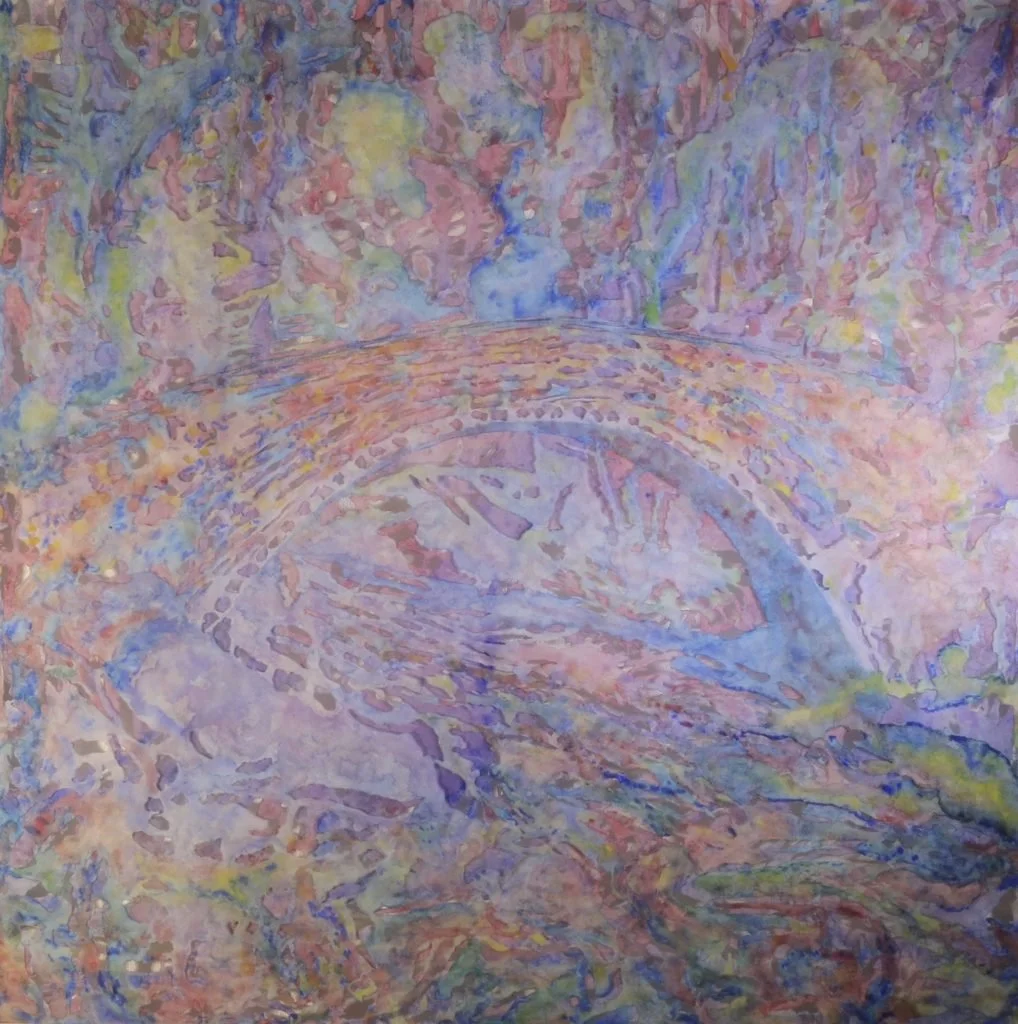Andrew Tomkins Moments in Time Catalogue Essay by Elizabeth Fortescue
Moments in Time
‘The concept of negative space is one of the first things art students learn in class. They’re taught what negative space is, and why it matters. They’re taught to look for the negative spaces in the world, and to use their new-found understanding to improve their compositions and their rendering of objects. When you realise what negative spaces are and you get used to looking for them, you never see the world in quite the same way again. A chair is no longer just a chair. It’s also a collection of strange, jagged shapes created by its own outlines against the table and the wall. A dog’s head is no longer just a dog’s head. It’s the funny little wedge shape you get if you draw a line from the top of one pricked ear, down across the top of the dog’s head, and back up to the other pricked ear. Negative spaces look like scrap-book offcuts. And they’re everywhere, all around us. It’s just that most of us aren’t trained to look for them. We’re taught to look at objects such as trees and flowers and cups, not at the spaces that enclose them. What’s the good of looking at something that isn’t there?
To Andrew Tomkins, negative spaces hold a fascination and even an obsession. He “sees the world in black and white”, and always has. He makes dozens of crisp-edged linocuts, his scalpel removing the negative spaces and leaving the positive spaces in relief so that they’ll attract the ink and allow a print to be pulled. The process can just as easily be reversed, with the positive spaces cut out and the remaining negative spaces being printed. Tomkins’ linocuts are satisfyingly beautiful, but he regards them as warming-up exercises for a process whose effect is altogether more ethereal and fleeting. Tomkins cuts images into opaque, tear-resistant polyester film which he then paints with watercolours. He can use the sheets singly or layer them, which has the effect of mixing the colours.
Tomkins began working this way in 2009 or 2010, after a light bulb moment inspired by a painting he saw in Venice that had been done on top of a street map. Up until then, he had used stencils and spray paints to make artworks, and had thrown away the used stencils. Now he realised the stencils themselves were calling out to be part of the finished product. Returning home from his trip to Italy, Tomkins picked the used stencils out of the corner of his Sydney studio and pinned them up on a large white wall to see what they looked like. Pleased with the result of his first artwork produced this way, he entered it into the 2011 Dobell Prize for Drawing at the Art Gallery of NSW. The picture, Mangrove forest, was selected to hang. Ever since then, Tomkins has been pushing the technique as far as he can, evolving ever more intricate and complex ways to cut and paint his stencils and layer them one over the other to create a mesmerising effect not unlike gazing into deep water.
In this exhibition, Moments in Time, Tomkins layers up to four hand-cut stencil sheets, often separating them with sheets of Perspex and sometimes even painting on the reverse of the Perspex dividers.
A note of melancholy and reflection is sounded in many of the works in this show, partly because of the loss of Tomkins’ father in early 2020 and partly because of the artist’s concern for Australian politicians’ inertia and fumbling in place of committed and urgent environmental action. In his work, I Heard the Banshee Cry, Tomkins records the poignant moment when he noticed that lilies in a vase at his home had suddenly drooped to envelope a small wooden duck his father had given him. Tomkins recognised this as a harbinger of death, and indeed his elderly father died soon afterwards. In Tomkins’ depictions of mangroves, he is pleading on behalf of the natural world for protection. His mangroves are painted bright blue in reference to the colour the ancient Celts were said to have dyed themselves before going into battle.
In another Celtic reference, Tomkins paints the Brig o’ Doon bridge immortalised in Tam o’ Shanter, a poem by Robert Burns. Tomkins’ late mother grew up near the famous bridge, and remembered being warned against crossing it for fear of the resident witch.
In A Ruin, Tomkins depicts a dilapidated Scots castle as a metaphor for the state of the environment. The equal emphasis on positive and negative spaces creates an intriguing slippage where the eye alternately locates and loses the image and is forced to search for it all over again. In this way Tomkins’ works are cyclical, speaking to the ever-changing nature of life and the world we live in.’
Elizabeth Fortescue
Click here to view Andrew Tomkins' profile and artworks.

